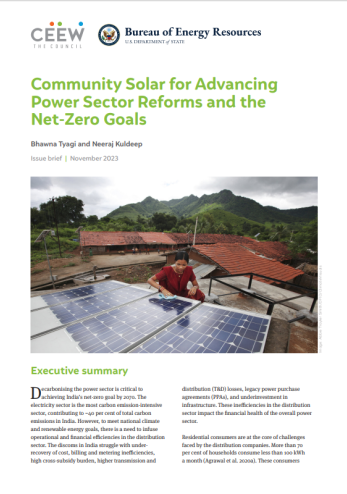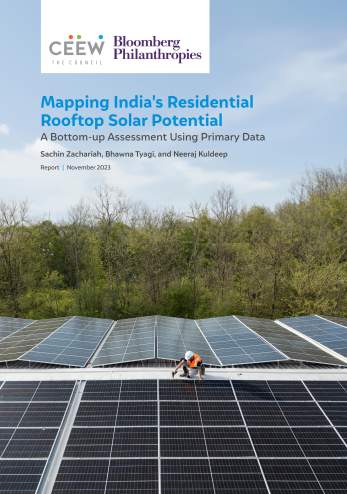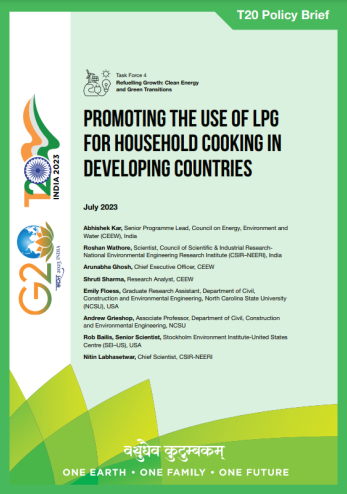Issue Brief
Feasibility Assessment of Agriculture Solar Micro-Grids
A Case Study of TP-DDL Discom in North Delhi
Selna Saji, Gandhar G. Ukidve, Neeraj Kuldeep
September 2021 | Energy Transitions
Suggested citation: Saji, Selna, Gandhar G. Ukidve, and Neeraj Kuldeep. 2021. Feasibility assessment of agriculture solar micro-grids: A case study of TP-DDL Discom in North Delhi. New Delhi: Council on Energy, Environment and Water.
Overview
This study discusses the economic analysis of a medium-sized solar plant (1 MW) connected to agriculture under different business models: farmer-owned, discom-owned and third-party-owned. It’s a case study on solarising the agriculture load in Tata Power’s license area in North Delhi. The analysis compares the levelised cost of electricity (LCoE) and farmer(s) income under the three business models. It also assesses the benefits to dicoms by shifting agriculture supply from night time to solar generation hours. The study recommends discom-owned/third-party-owned model as a win-win proposal for the discom and farmers, enabling scaling up of solarisation of the agriculture sector.
Key Findings
- For farmer and discom-owned systems, the cost of procuring components such as modules, inverters, and wires would be higher than for third-party-owned systems because the former would be procuring them at the market price. In contrast, the latter would do so at wholesale quantum, giving the third-party owned systems a cost advantage.
- Additionally, developers can raise capital at more attractive interest rates due to better credit ratings than farmers and the discoms. Therefore, comparatively, the cost of debt is least in third-party-owned systems. The developers operate their businesses on a thin margin due to strong competition and thus give the lowest return on equity compared to other ownership structures.
- Yet, farmer-owned models are likely to fetch the lowest levelised tariff as the lease rent for other models increases by around 17–28 per cent (adding about 0.7 INR/kWh). The savings on land lease offsets the rise in input prices and other financial costs, making farmer-owned system cheapest in INR per kWh terms among the business models.
Farmer-owned system is the cheapest way to generate power
Source: CEEW analysis
Note: Values in blue font indicate ‘LCoE’
- The Agriculture cum Solar Farm Scheme provides for a monthly sum of INR 8,999 per acre to farmers who lease their land to project developers. The lease payment is escalated at 6 per cent per annum for 25 years.
- Farmers under the scheme could earn INR 56 lakh for leasing land for a 1 MW plant instead of project ownership, which gives an income of INR 9.59 lakh.
Farmer income under different business models.
Source: Authors’ analysis
Key Recommendations
- Promote third-party owned/ discom-owned models for a successful rollout of solarisation of agriculture since farmers face market challenges such as higher upfront cost, lack of access to low-cost capital, and lack of know-how of the technology.
- Farmers in New Delhi should prefer land leasing over plant ownership. The former gives income six times greater than plant ownership without impacting the farming activity.
- The discom should shift night-time agriculture load to day-time to save on power purchase expenses and receive renewable purchase obligation benefits.
- TP-DDL should propose suitable compensatory charges to the regulator to avoid recurring revenue loss from virtual net-metering to government entities under the Agriculture cum Solar Farm Scheme.
A 1 MW solar plant deployed at the elevated structure, and spread over 6 acres, can give INR 56 Lacs to farmers through land lease, as opposed to INR 9 Lacs in case of farmer ownership.







